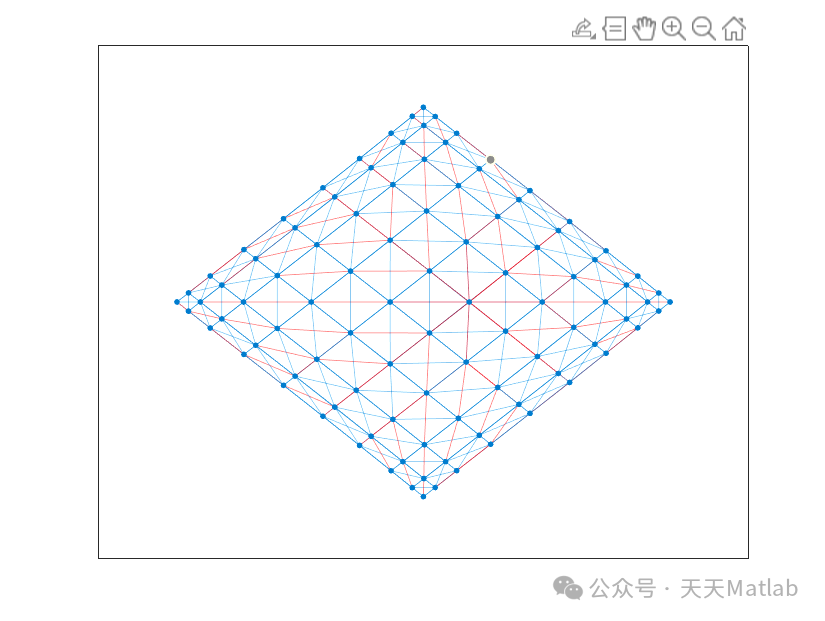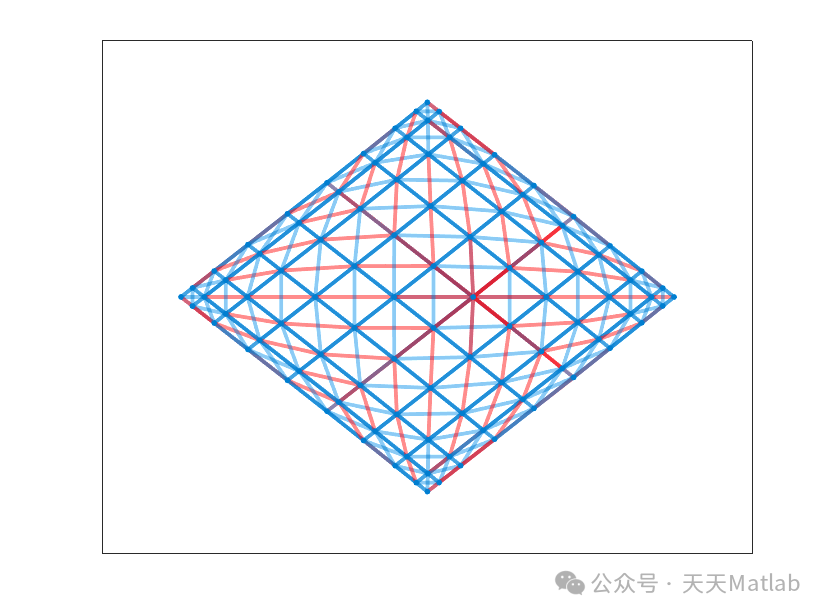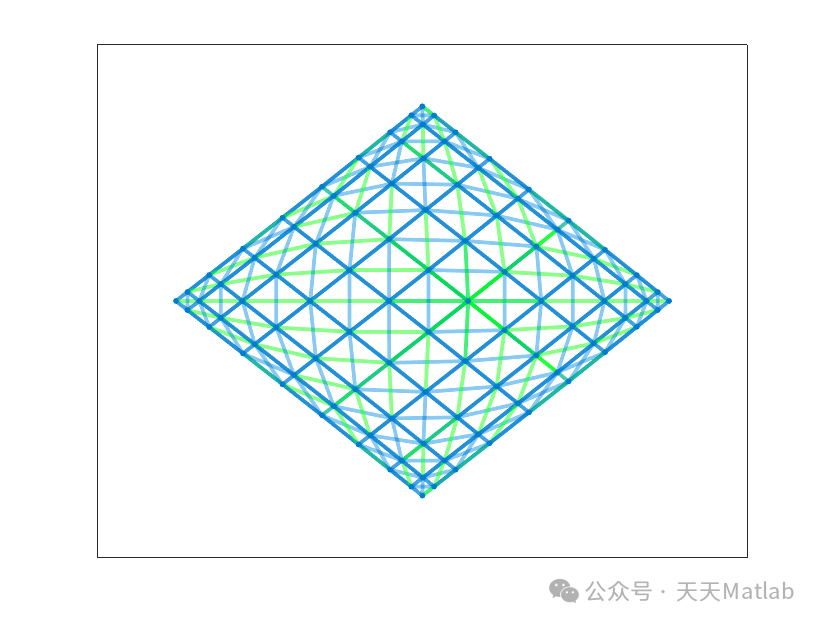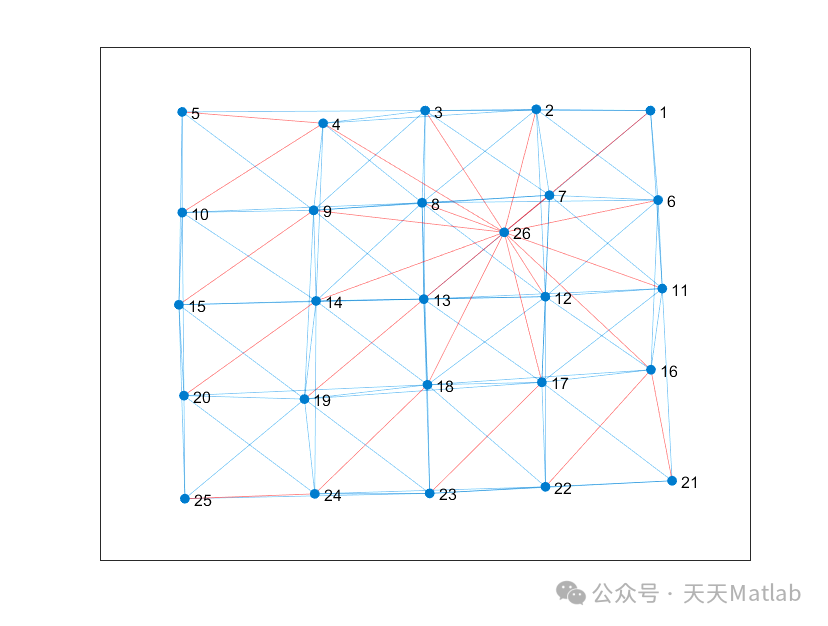✅ Author Bio: A research enthusiast and Matlab simulation developer, skilled in data processing, modeling simulation, program design, complete code acquisition, paper reproduction, and scientific simulation.
🍎 Previous reviews, follow the personal homepage:Matlab Research Studio
🍊 Personal motto: Investigate things to gain knowledge, complete Matlab code and simulation consultation available via private message.
Intelligent Optimization Algorithms Neural Network Prediction Radar Communication Wireless Sensors Power Systems
Signal Processing Image Processing Path Planning Cellular Automata Unmanned Aerial Vehicles
Physical Applications Machine Learning Series Workshop Scheduling SeriesFiltering and Tracking Series Data Analysis Series
Image Processing Series
🔥 Content Introduction
Wireless Sensor Networks (WSN), as a type of distributed sensing network, are widely used in fields such as environmental monitoring, smart homes, healthcare, and industrial automation. However, WSN nodes are typically battery-powered, with extremely limited energy resources. Therefore, designing an efficient, low-power messaging algorithm to extend the lifespan of WSNs has been a key focus for researchers. This article will delve into a messaging algorithm for ultra-low power wireless sensor networks, analyzing its design philosophy, advantages, limitations, and prospects for future development.
Traditional messaging algorithms for wireless sensor networks, such as flooding algorithms and routing protocols, often generate a large number of redundant packets, exacerbating energy consumption at the nodes. To address this issue, messaging algorithms for ultra-low power wireless sensor networks must optimize the following aspects:
- Reduce energy consumption during idle listening: Sensor nodes spend most of their time in an idle listening state, waiting to receive data. This idle listening consumes a significant amount of energy.
- Minimize redundant data transmission: Redundant packets not only increase energy consumption but also cause channel congestion, reducing overall network performance.
- Optimize routing selection algorithms: Select the optimal transmission path to reduce the number of hops, thereby lowering energy consumption.
- Fully utilize hardware characteristics: Optimize algorithm implementation for specific hardware platforms to improve energy efficiency.
The sleep scheduling-based messaging algorithm is currently a research hotspot in the field of ultra-low power wireless sensor networks. The core idea of this algorithm is to divide the nodes in the network into active nodes and sleep nodes, with nodes periodically entering sleep mode to reduce energy consumption during idle listening. Active nodes are responsible for receiving and forwarding data, while sleep nodes remain in a low-power state, waking only at specific times.
Common implementations of sleep scheduling algorithms include:
- Fixed sleep/wake cycles: All nodes adopt the same sleep and wake cycles, simplifying the complexity of the scheduling algorithm but offering poor flexibility, making it difficult to adapt to dynamic network environments.
- Random sleep/wake cycles: Nodes adopt random sleep and wake cycles, avoiding channel congestion caused by synchronized waking, but increasing data transmission delays.
- Contention-based sleep/wake scheduling: Nodes compete for channel resources to decide whether to enter sleep mode, allowing for adaptive adjustment of sleep time to improve energy efficiency.
- Prediction-based sleep/wake scheduling: Nodes predict the wake times of neighboring nodes and adjust their own sleep states to achieve efficient data transmission.
Advantages of sleep scheduling-based messaging algorithms include:
- Significantly reduced energy consumption: By periodically entering sleep mode, nodes can greatly reduce energy consumption during idle listening, extending the network’s lifespan.
- Suitable for large-scale deployment: Sleep scheduling algorithms can effectively control the number of active nodes in the network, reducing channel congestion, making them suitable for large-scale WSN deployments.
- Easy to implement and deploy: Compared to complex routing protocols, sleep scheduling algorithms are generally easier to implement and deploy, reducing development difficulty.
However, sleep scheduling-based messaging algorithms also have some limitations:
- Increased data transmission delays: Since nodes must wait for neighboring nodes to wake up before data transmission can occur, data transmission delays may increase.
- Synchronization issues: Ensuring synchronization between nodes to avoid data loss or transmission failure is a significant challenge.
- Adaptability to topology changes: When network topology changes, sleep scheduling algorithms need to be adjusted to ensure network connectivity and performance.
- Difficulties in parameter optimization: The choice of sleep and wake cycle parameters directly affects network performance and requires careful optimization.
To overcome the above limitations, researchers have proposed various improvement schemes:
- Dynamic adjustment of sleep cycles: Dynamically adjust sleep cycles based on factors such as remaining node energy and network congestion to achieve optimal energy efficiency.
- Introduction of priority mechanisms: Assign higher priority to important packets for transmission, reducing delays.
- Adoption of multi-hop transmission mechanisms: Allow nodes to transmit data through multiple hops, improving network connectivity and coverage.
- Integration of energy harvesting technologies: Utilize ambient energy sources, such as solar energy and vibration energy, to extend node lifespans.
Looking ahead, the development direction of messaging algorithms for ultra-low power wireless sensor networks mainly includes:
- Adaptive learning algorithms: Utilize machine learning techniques to enable nodes to automatically learn the characteristics of the network environment and adjust their behavior based on learning results to improve energy efficiency.
- Edge computing: Shift computational tasks from the cloud to sensor nodes, reducing data transmission volume and lowering energy consumption.
- AI-assisted sleep scheduling: Use artificial intelligence algorithms to predict node states, optimizing sleep scheduling strategies to enhance network performance.
- Integration with new hardware platforms: Design more efficient messaging algorithms tailored to new low-power hardware platforms.
Conclusion:
The messaging algorithm for ultra-low power wireless sensor networks is key to extending the lifespan of WSNs. The sleep scheduling-based messaging algorithm reduces energy consumption during idle listening by classifying nodes into active and sleep nodes, making it suitable for large-scale WSN deployments. Despite some limitations, such as increased data transmission delays and synchronization issues, various improvement schemes, such as dynamic adjustment of sleep cycles and the introduction of priority mechanisms, can effectively overcome these challenges. With the continuous development of technologies like artificial intelligence and edge computing, future messaging algorithms for ultra-low power wireless sensor networks will become more efficient and intelligent, offering broader prospects for WSN applications. Future research directions should focus on adaptive learning algorithms, edge computing, AI-assisted sleep scheduling, and integration with new hardware platforms to further enhance energy efficiency and performance in WSNs.
⛳️ Operation Results




🔗 References
📣 Partial Code
🎈 Some theoretical references are from online literature; please contact the author for removal if there is any infringement.
👇 Follow me to receive a wealth of Matlab e-books and mathematical modeling materials
🏆 Our team specializes in custom MATLAB simulations across various research fields, helping to realize research dreams:
🌈 Various intelligent optimization algorithm improvements and applications
Production scheduling, economic scheduling, assembly line scheduling, charging optimization, workshop scheduling, departure optimization, reservoir scheduling, three-dimensional packing, logistics site selection, cargo location optimization, bus scheduling optimization, charging pile layout optimization, workshop layout optimization, container ship loading optimization, pump combination optimization, medical resource allocation optimization, facility layout optimization, visual domain base station and drone site selection optimization, knapsack problem, wind farm layout, time slot allocation optimization, optimal distributed generation unit allocation, multi-stage pipeline maintenance, factory-center-demand point three-level site selection problem, emergency supply distribution center site selection, base station site selection, road lamp post arrangement, hub node deployment, transmission line typhoon monitoring devices, container scheduling, unit optimization, investment portfolio optimization, cloud server combination optimization, antenna linear array distribution optimization, CVRP problem, VRPPD problem, multi-center VRP problem, multi-layer network VRP problem, multi-center multi-vehicle VRP problem, dynamic VRP problem, two-layer vehicle routing planning (2E-VRP), electric vehicle routing planning (EVRP), oil-electric hybrid vehicle routing planning, hybrid flow shop problem, order splitting scheduling problem, bus scheduling optimization problem, flight shuttle vehicle scheduling problem, site selection path planning problem, port scheduling, port bridge scheduling, parking space allocation, airport flight scheduling, leak source localization
🌈 Time series, regression, classification, clustering, and dimensionality reduction in machine learning and deep learning
2.1 BP time series, regression prediction, and classification
2.2 ENS voice neural network time series, regression prediction, and classification
2.3 SVM/CNN-SVM/LSSVM/RVM support vector machine series time series, regression prediction, and classification
2.4 CNN|TCN|GCN convolutional neural network series time series, regression prediction, and classification
2.5 ELM/KELM/RELM/DELM extreme learning machine series time series, regression prediction, and classification
2.6 GRU/Bi-GRU/CNN-GRU/CNN-BiGRU gated neural network time series, regression prediction, and classification
2.7 Elman recurrent neural network time series, regression prediction, and classification
2.8 LSTM/BiLSTM/CNN-LSTM/CNN-BiLSTM long short-term memory neural network series time series, regression prediction, and classification
2.9 RBF radial basis function neural network time series, regression prediction, and classification
2.10 DBN deep belief network time series, regression prediction, and classification
2.11 FNN fuzzy neural network time series, regression prediction
2.12 RF random forest time series, regression prediction, and classification
2.13 BLS broad learning system time series, regression prediction, and classification
2.14 PNN pulse neural network classification
2.15 Fuzzy wavelet neural network prediction and classification
2.16 Time series, regression prediction, and classification
2.17 Time series, regression prediction, and classification
2.18 XGBOOST ensemble learning time series, regression prediction, and classification
2.19 Transform various combinations of time series, regression prediction, and classification
Directions cover wind power prediction, photovoltaic prediction, battery life prediction, radiation source identification, traffic flow prediction, load prediction, stock price prediction, PM2.5 concentration prediction, battery health status prediction, electricity consumption prediction, water body optical parameter inversion, NLOS signal identification, precise prediction of subway stops, transformer fault diagnosis
🌈 In image processing
Image recognition, image segmentation, image detection, image hiding, image registration, image stitching, image fusion, image enhancement, image compressed sensing
🌈 In path planning
Traveling salesman problem (TSP), vehicle routing problem (VRP, MVRP, CVRP, VRPTW, etc.), UAV three-dimensional path planning, UAV collaboration, UAV formation, robot path planning, grid map path planning, multimodal transport problems, electric vehicle routing planning (EVRP), two-layer vehicle routing planning (2E-VRP), oil-electric hybrid vehicle routing planning, ship trajectory planning, full path planning, warehouse patrol
🌈 In UAV applications
UAV path planning, UAV control, UAV formation, UAV collaboration, UAV task allocation, UAV secure communication trajectory online optimization, vehicle collaborative UAV path planning
🌈 In communication
Sensor deployment optimization, communication protocol optimization, routing optimization, target localization optimization, Dv-Hop localization optimization, Leach protocol optimization, WSN coverage optimization, multicast optimization, RSSI localization optimization, underwater communication, communication upload and download allocation
🌈 In signal processing
Signal recognition, signal encryption, signal denoising, signal enhancement, radar signal processing, signal watermark embedding and extraction, EMG signals, EEG signals, signal timing optimization, ECG signals, DOA estimation, encoding and decoding, variational mode decomposition, pipeline leakage, filters, digital signal processing + transmission + analysis + denoising, digital signal modulation, bit error rate, signal estimation, DTMF, signal detection
🌈 In power systems
Microgrid optimization, reactive power optimization, distribution network reconstruction, energy storage configuration, orderly charging, MPPT optimization, household electricity
🌈 In cellular automata
Traffic flow, crowd evacuation, virus spread, crystal growth, metal corrosion
🌈 In radar
Kalman filter tracking, trajectory association, trajectory fusion, SOC estimation, array optimization, NLOS identification
🌈 In workshop scheduling
Zero-wait flow shop scheduling problem (NWFSP) , Permutation flow shop scheduling problem (PFSP) , Hybrid flow shop scheduling problem (HFSP) , zero idle flow shop scheduling problem (NIFSP), distributed permutation flow shop scheduling problem (DPFSP), blocking flow shop scheduling problem (BFSP)
👇